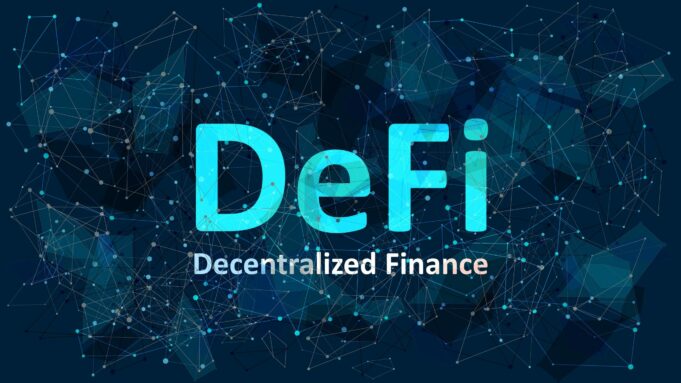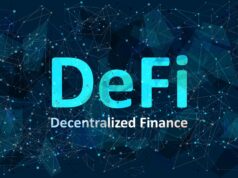Decentralized finance (DeFi) has emerged as one of the most significant trends in the blockchain and cryptocurrency space in recent years. With the promise of democratizing financial services and providing more accessible, transparent, and inclusive solutions, DeFi has garnered considerable attention from both investors and developers.In this article, we will analyze the DeFi boom, its driving factors, and the potential challenges faced by this burgeoning industry. Kickstart your Bitcoin trading adventure by exploring https://nerdynator.com/, where you can create an account and execute successful trades, regardless of your trading experience.
The Rise of DeFi
Decentralized Finance (DeFi) is a groundbreaking concept that aims to transform traditional financial services by using blockchain technology. DeFi applications and services are built on decentralized blockchain networks, primarily Ethereum, and they eliminate intermediaries such as banks and financial institutions. This enables users to interact directly with one another through smart contracts, which automate the lending, borrowing, and trading processes. DeFi has gained significant popularity because it has the potential to democratize finance and provide access to financial services to anyone with an internet connection. Popular DeFi use cases include lending and borrowing platforms, decentralized exchanges (DEXs), stablecoins, and yield farming.
DeFi has the potential to transform the traditional financial landscape by making financial services more accessible, transparent, and cost-effective. By eliminating intermediaries, DeFi applications and services can provide users with access to affordable loans, a secure and transparent trading experience, a stable store of value, and rewards for providing liquidity to decentralized protocols. DeFi is still in its early stages, but it has already gained significant traction, with billions of dollars locked up in DeFi protocols. As the ecosystem continues to grow and evolve, it has the potential to disrupt traditional finance and provide users with a more decentralized and democratized financial system.
Factors Driving the DeFi Boom
Several factors have contributed to the rapid growth and adoption of DeFi, including:
- Innovation: DeFi projects have introduced novel financial products and services that challenge traditional finance models. For example, lending platforms like Aave and Compound allow users to earn interest on their crypto assets or borrow funds without going through a centralized intermediary.
- Accessibility: DeFi platforms are permissionless and open to anyone with an internet connection and a cryptocurrency wallet. This democratization of finance has attracted users from around the world, particularly those who are underserved or excluded from traditional financial systems.
- Yield Farming: Yield farming, also known as liquidity mining, has played a significant role in the DeFi boom. Users can earn tokens or interest by providing liquidity to DeFi platforms, often resulting in attractive returns compared to traditional investment options.
- Interoperability: Many DeFi protocols are built on the Ethereum network, which enables seamless integration and interaction between different applications. This composability has given rise to the term “money legos” as users can combine various DeFi services to create customized financial solutions.
Challenges Facing the DeFi Industry
Despite its rapid growth and potential benefits, the DeFi industry faces several challenges that must be addressed to ensure its long-term success:
- Scalability: As most DeFi platforms are built on Ethereum, they are subject to the network’s limitations in terms of transaction throughput and gas fees. High transaction costs and network congestion can hinder DeFi’s growth and user experience.
- Security: DeFi platforms rely on smart contracts, which can be vulnerable to attacks or exploits if not properly audited and secured. Several high-profile hacks and exploits have resulted in significant losses for users and shaken confidence in the space.
- Regulation: As DeFi continues to grow, it is likely to attract increased regulatory scrutiny. Governments and regulators may seek to impose rules and restrictions on DeFi platforms and services, which could impact the industry’s growth and innovation.
- User Experience: Many DeFi platforms have complex user interfaces and require a certain level of technical knowledge to navigate. To attract a broader user base, DeFi applications must prioritize user experience and simplicity.
Conclusion
Decentralized Finance (DeFi) has been one of the most exciting developments in the blockchain and cryptocurrency industry in recent years. It offers innovative financial products and services that challenge traditional finance models, potentially reshaping the financial landscape. However, the industry must address challenges related to scalability, security, regulation, and user experience to ensure its long-term success and mass adoption.
To address scalability, developers are exploring solutions such as layer-two scaling solutions, sharding, and other scaling techniques. Security risks are mitigated by improving code audits, bug bounties, and insurance mechanisms. Regulatory compliance is a challenge that DeFi must navigate while maintaining its decentralized nature. Finally, to make DeFi more accessible and user-friendly, developers are working on improving user interfaces, education materials, and customer support. Despite these challenges, the future of DeFi looks promising as it has the potential to revolutionize finance as we know it.


















